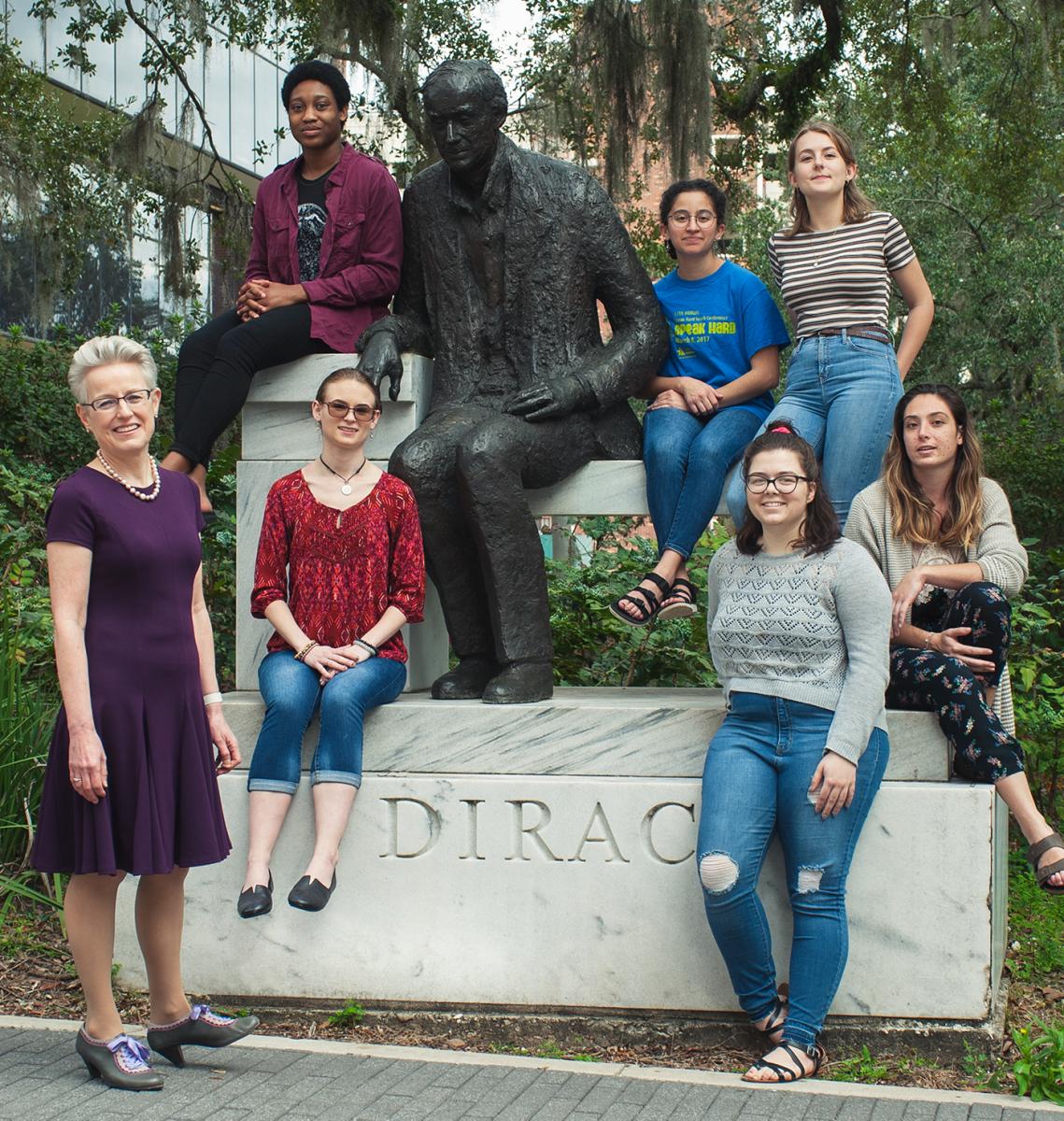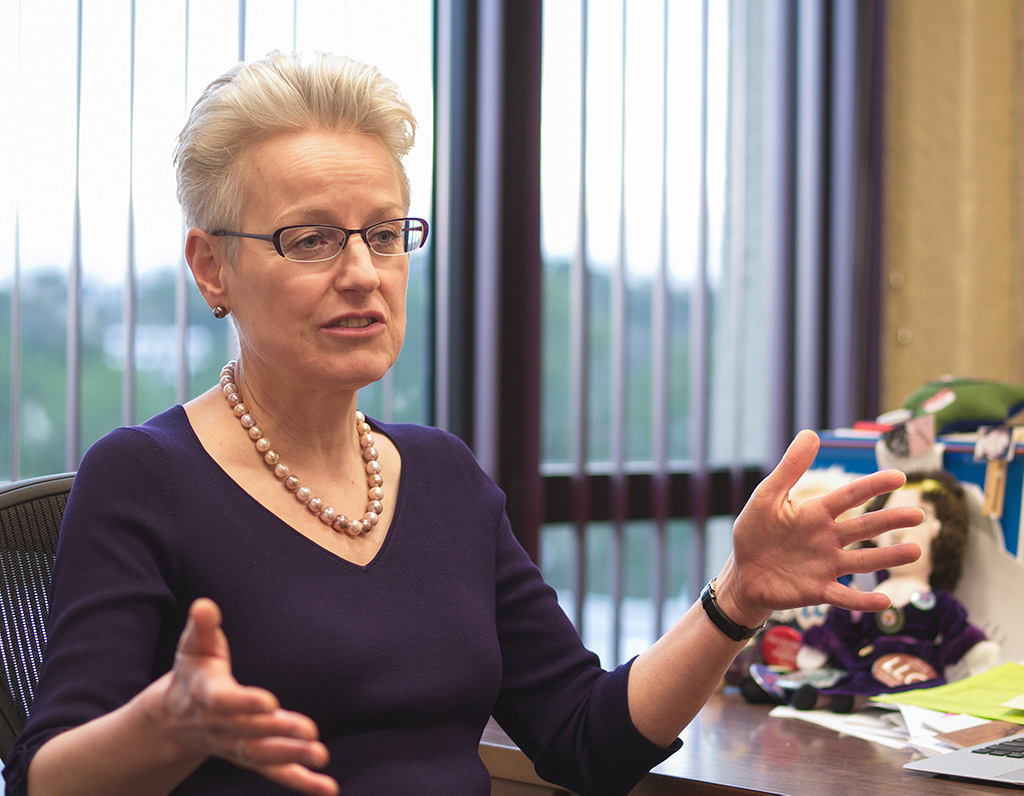

A
s a high school student, Susan Blessing (PHYS ’82) was enthralled with physics and the way it could explain exactly how the universe worked. “Physics is everything,” she says.
But at the same time, after she enrolled at Illinois Tech, she realized that physics wasn’t everything—it wasn’t gender equal. From the time she began studying physics, she was surrounded by men. “There were very few women,” she says. “I knew I had to get used to it because that is what the future would hold.”
Since then, Blessing has been driven not only by the need to find and understand the basic building blocks of matter, but also by a mission to recruit more women into science. Now, 37 years after graduation, she can say she has contributed to fundamental physics research while shepherding hundreds of young women into scientific careers through a STEM mentorship program.
“I work hard to get more women in science and to build a community, since what helps women helps everybody,” Blessing says.

Her physics research career began as an undergraduate, when she worked at Fermi National Accelerator Laboratory on a neutrino experiment, eventually helping to write the software that would reconstruct and analyze experiment data. After graduating from Illinois Tech, she earned a Ph.D. from Indiana University Bloomington and ultimately secured a tenure-track professorship at Florida State.
She built her career conducting research at Fermilab on the DZero experiment, studying the collision of protons and antiprotons to look for new phenomena predicted to exist within the standard model of particle physics. She was part of the team that discovered the top quark and searched for the quark’s supersymmetric partner, the squark.
But as she became more successful in her career—she was elected as a fellow of the American Physical Society in 2017—she expected the ranks of female physicists to rise. Although the percentage of Ph.D.s in physics awarded to women rose from 10 percent in 1988 to almost 20 percent in 2012, according to the American Institute of Physics, Blessing knew there was still much room for growth. So, in 2005, she took over Florida State’s Women in Math, Science & Engineering program, which brings together female STEM students in a living-learning community to develop personally and professionally. There, young women are encouraged to conduct research and explore STEM careers.
Since Blessing took over the program, more than 450 young women have participated, with more women participating in undergraduate research than ever before. The key to their success is confidence, she says.
“Most young women who try research love it,” she says. “I tell them to not get discouraged, that science is hard work, but it’s hard work for everyone, even for the guys, even if they don’t show it.”
One of those women was Brianna Griffin, who enrolled in the program as a freshman six years ago. Though Griffin was set on going to medical school, Blessing encouraged her to try biology research. Griffin was soon hooked.
“I felt that her support helped me reach my goal of attending graduate school for a Ph.D. in plant biology,” Griffin says. “She has been a wonderful mentor.”
Blessing remains connected to Illinois Tech—she met her husband, architect Kevin Sossong (ARCH ’84), as an undergraduate, and now her son, Dominick, is enrolled as a third-year mechanical engineering student—but says that, as an undergraduate, she likely would not have participated in a mentorship program like the one she runs. That only gives her more motivation to recruit young women and help them grow.
“I like seeing what they can do, what they can come up with on their own,” she says. “It’s great to send them off into the world.”